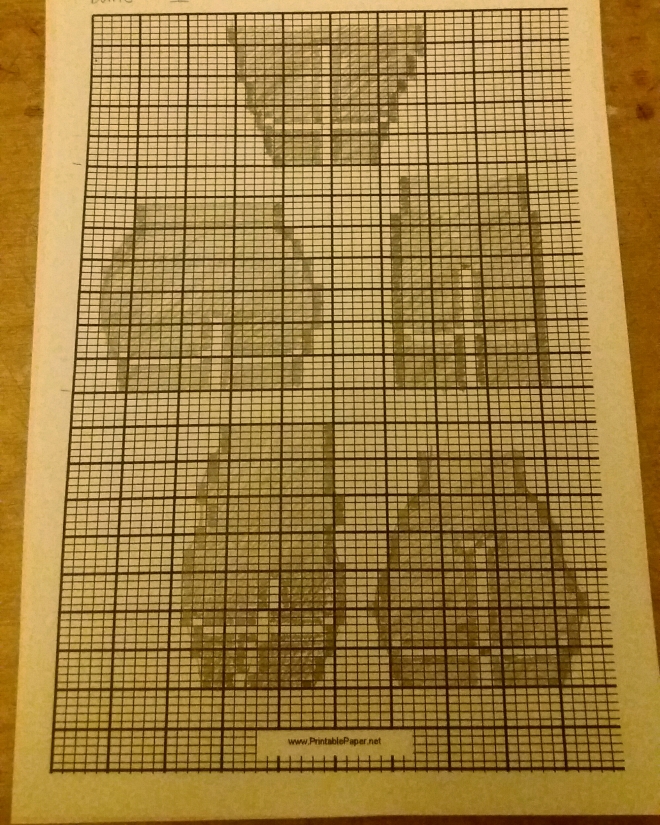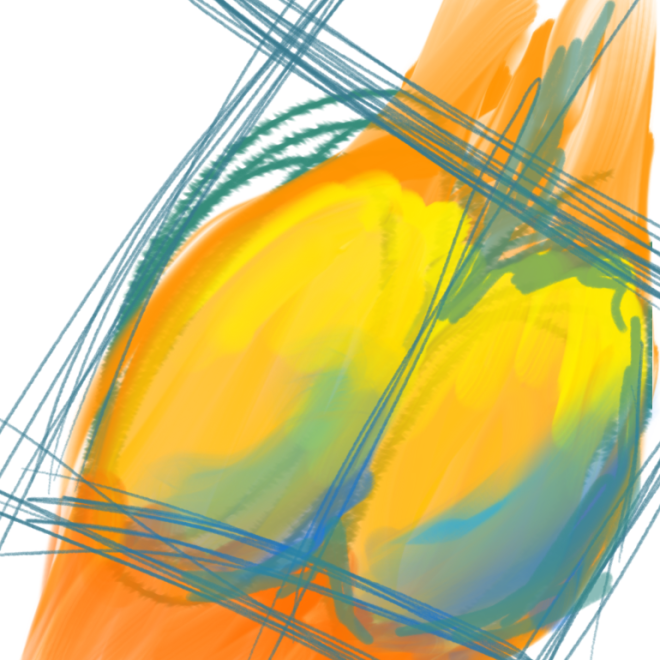
imagination
Bums, Bums more Bums!!
I have worked back into the watercolour bums i made earlier. I haven’t done anything amazing with them, i just used fine liner and a sharpie to create a more ‘realistic’ shape, to define the bums. I really love the simplicity of them!
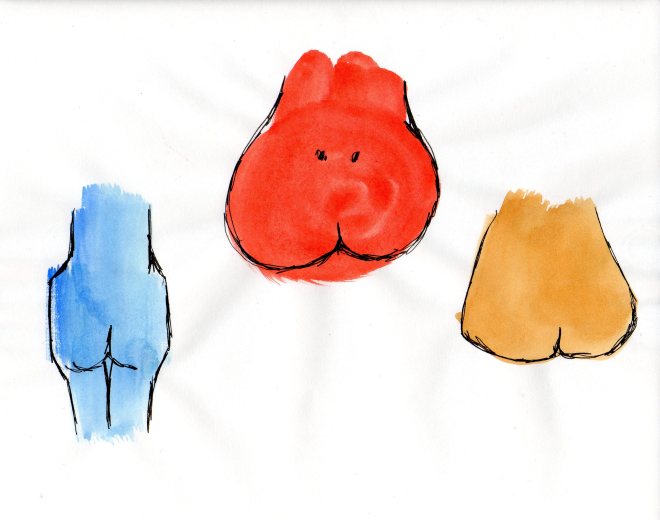
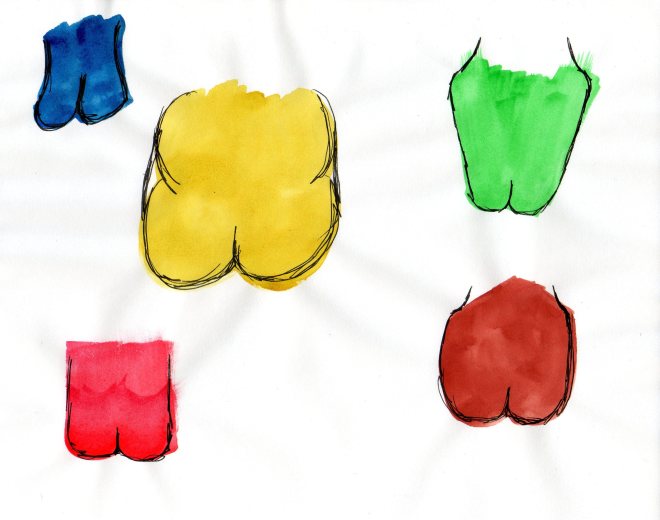

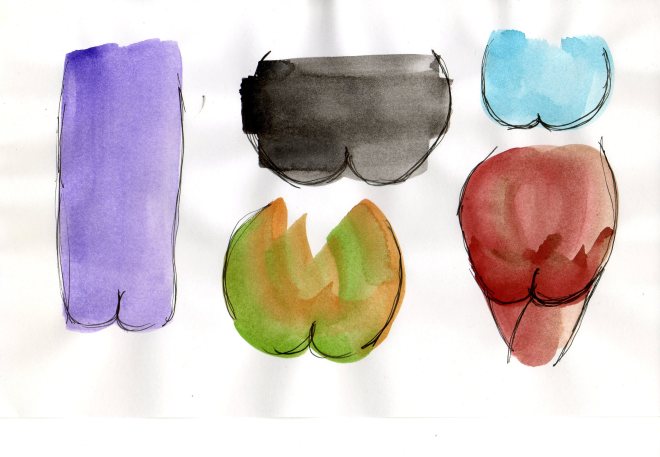
Knitting Pattern
This is one of those things where you have an idea, and you cannot do anything else until you have it out of your head! The next step is to knit it.
Figure & Form
Figure and form have been explored throughout humanity, whether it be through symbolic meaning or by exploring ‘beauty’. It is interesting to see how the figures alter through the years and regions.
Palaeolithic Art
These figures are very shapely; curvaceous; volumptuous and rounded. They are steeped in meaning and symbolism which, for me, makes them for more beautiful!
Neolithic Art and Egyptian Art
Left – The shape is very basic and almost looks printed, even though it has been painted to be very shapely and have big thighs.
Right – This figure is pear-shaped, with angular curves. It is not as rounded as the previous examples and is far more stylised.
Pre-Hellenistic Art
First of all, I FOUND A MAN’S BUM! (they are weirdly hard to find)
They are both very smooth, almost appearing real as if they are actual people. These examples feel more realistic because they have been worked into so much in order to get the ‘perfection’ that was desired.
Roman and Spanish Art
Left – I quite like the rough textures in this one, which has no relevance to the bum, but i feel it adds to the realism of the piece. The figure is quite square-hipped and nips in at the waist.
Right – This way of lying down is very flattering as it accentuates the curve of the hip which you can see from how the spine bends round. This gives her a very curvy shape.
French Art
Both of these images are painted from ordinary life settings. They look natural and not set up or ‘posed’. This is great because you get to see the bums as they are normally, not forced to look more curved and full.
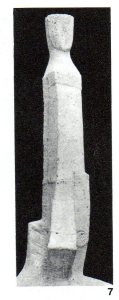
Fritz Wotruba (b.1907): Standing Figure. Breccia. 1953-5. Musee National d’Art Moderne, Paris. P299.
European Sculpture
This form is an abstract of the human figure; a much simplified version that rethinks the ‘figure’ and transforms it into something unconventionally beautiful.
British Sculpture
I have always been a fan of Henry Moore and Barbara Hepworth (i think you have to be if you come from Yorkshire), the way they both turn figures into unconventional abstract forms is unique. Sometimes they still look like the human body, being obvious what has inspired the work, whereas other times they are so strange and disjointed from their inspiration that you aren’t quite sure where it has come from. Until, you see the prefiguring chain of sketches and drawings, which showcases the whole journey undertaken, up to the final outcome.
All images from this post were sourced from –
(1979). A Picture History of Art. Oxford: Phaidon Press Limited.
Bums from Imagination
My imagination has been one of the main points of exploration (due to lack of a life model). It has enabled me to see where i need to take my research.
One thing that has become apparent is that, i often smooth out the lines. This i found extremely odd because it is actually the lumpier bumpier bums that i am interested in, but i don’t seem to draw these when i draw from imagination. This is something i found when i completed the traced drawings because i was copying the exact shape in that exercise, but apparently i have been editing in this one!
New drawing programme
A friend of mine recently told me about a new drawing programme that she had started to use. It is called ‘Sketchbook’.
As part of my course, i am having to use Photoshop and Illustrator, but i don’t really get along with it. I only really use it because i have too, and i use it as little as possible. Whereas, with this programme (i think she has created a monster by telling me about it), I AM ADDICTED!
It works in pretty much the same way. You can create layers, move objects and duplicate things you have just done. But it is fool proof. Everything makes sense and works how you expect it to. Logical.
The only problem i have found with it is, when drawing a separate section, it is best to do so on a new layer, as the moving tool moves the whole layer, not just the object. I, obviously, kept forgetting to do this. But once i remembered (most times) it worked perfectly!
There are so many tools to choose from, so many colours and so many shapes. It really has opened my eyes to the possibilities of digital drawing.
These two drawings were created on this programme, but drawn from my imagination.
I used one of the brush tools to create them. It is amazing! It actually works as a real paint brush. It starts off being filled with colour and gradually fades out, but if you go back over a solid colour section, it blends it, just like an actual brush would. Through working with layers i was able to build up my drawings and re-arrange them to make sure i got the best out of my work.
This was by far the most fun i have had with a digital drawing programme, and i will definitely be shouting from the rooftops about it.
So thank you friend of mine for showing me the wonders that is Autodesk Sketchbook.

